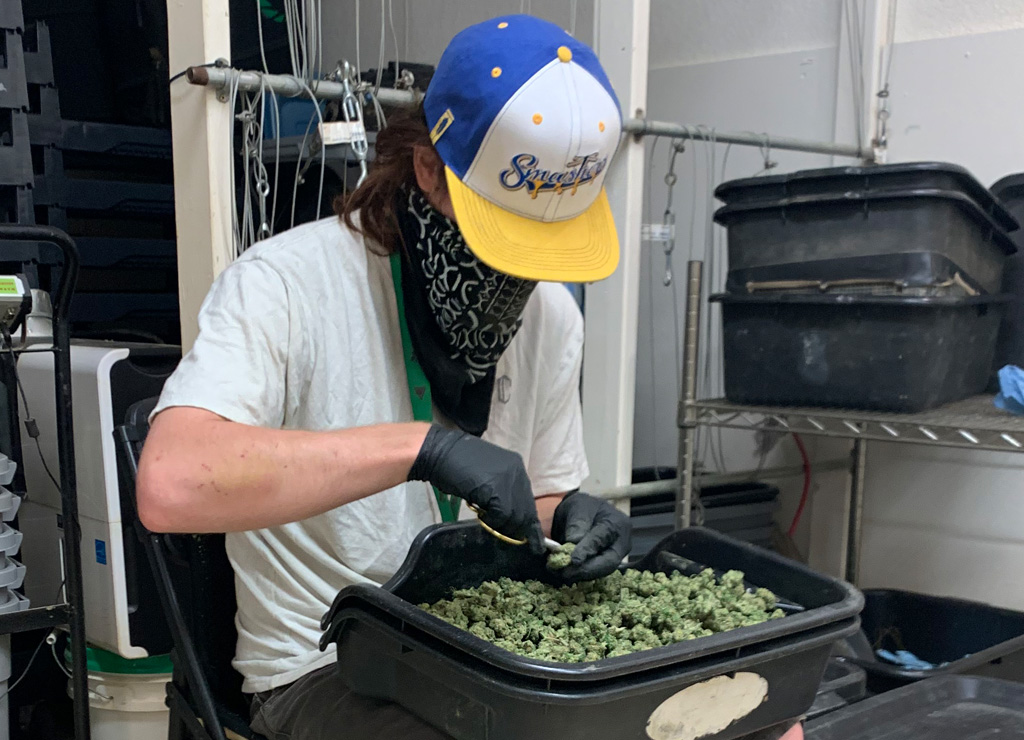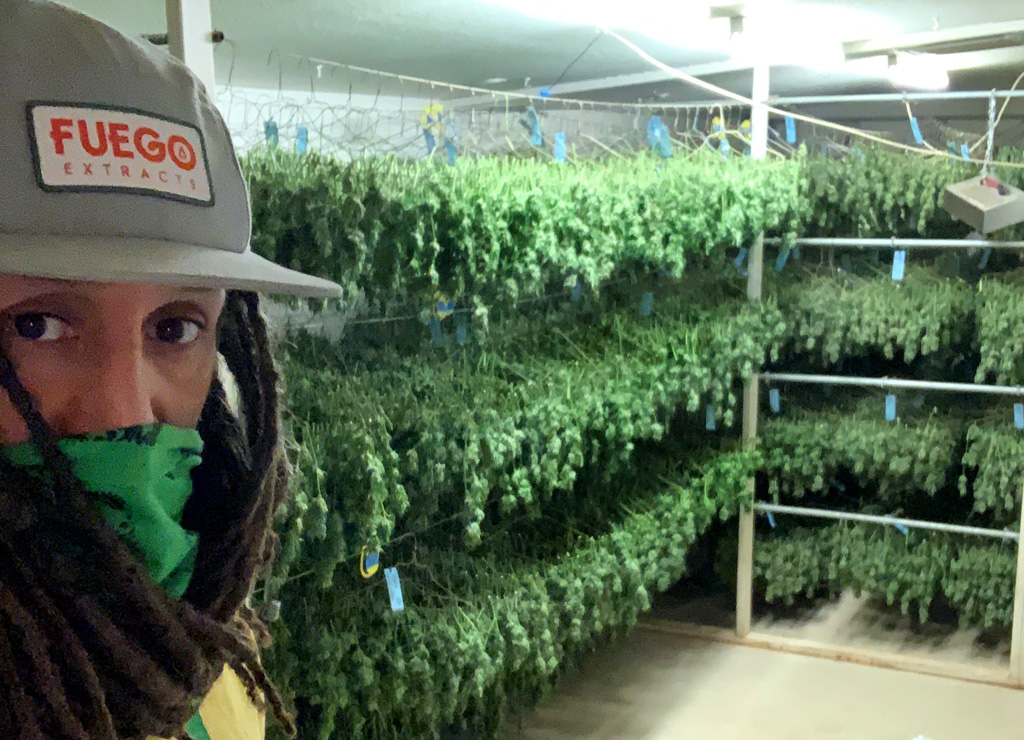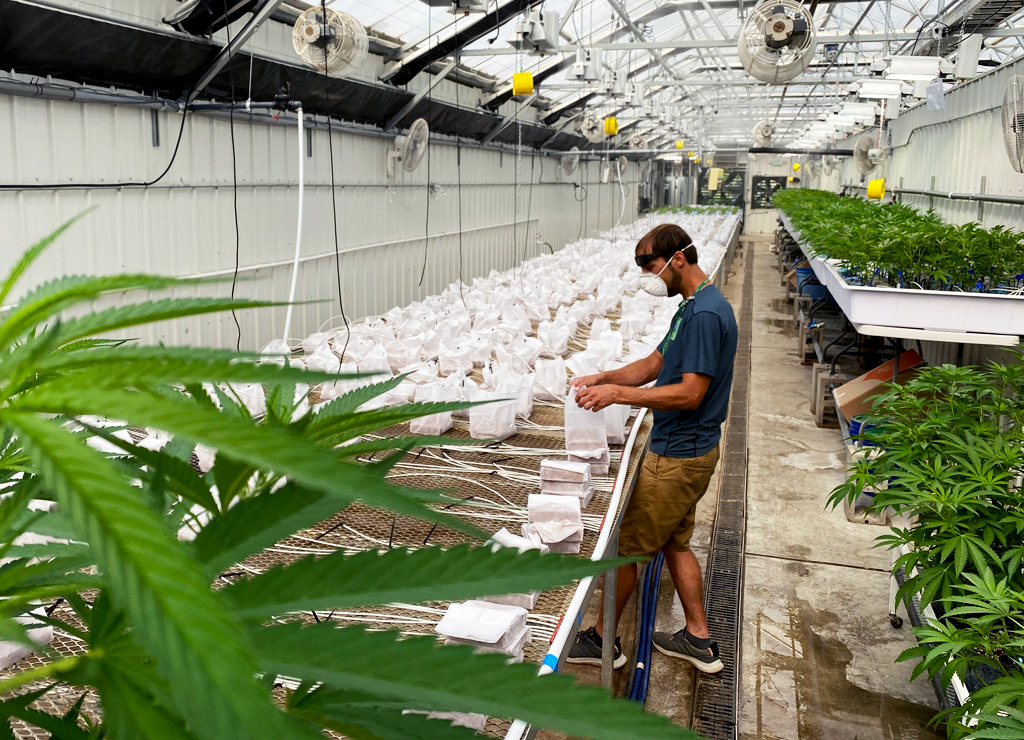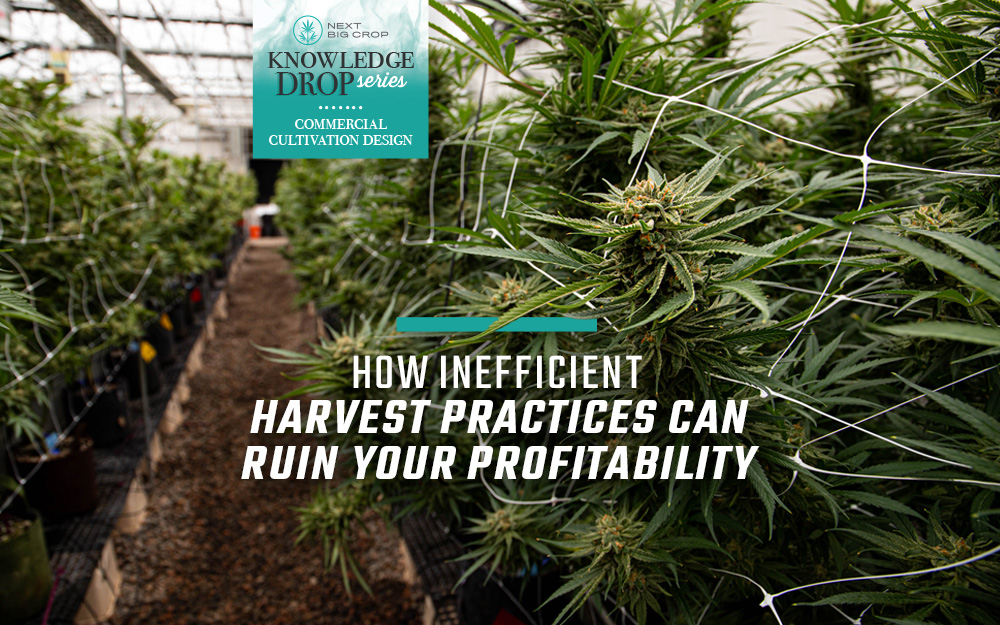By Rasta Ronnie, High-Grade Specialist at Sevenfive Farm
Harvest is a busy time for marijuana cultivators, and in today’s competitive landscape, it’s essential for cultivators to identify a fine-tuned and effective process for efficient cannabis harvesting.
Every facility is a little different, and cultivation methodologies run the gamut, so an established workflow for one facility may not work for others. That said, there are a few key harvest considerations that apply to every cultivator.
Well-Staffed Facilities are Happy Facilities
Having the right mix of people, and the right number of people to assist with harvesting is a major part of the harvest efficiency equation.
Many companies turn to temporary staffing agencies to supplement their workforce, but with the spread of COVID-19, it’s risky to bring in unknown workers, and it’s a challenge to manage workflow while practicing social distancing. If you know you’re going to need temp workers, I recommend carefully planning the days you’ll need temps on site, to avoid having more people than needed in your facility at any given time.
It’s important to have enough people to handle your harvest, but you don’t want to overestimate that number. Instead, improve the efficiency of your in-house staff by treating them well and incentivizing them for being efficient. Be flexible and understanding of how the needs of both your employees and your business vary.

Also keep in mind that your harvest days will be more successful if the people doing the work are motivated and happy. It’s important to take care of the people taking care of your plants. You can start with providing coffee, sodas and pizza and making sure they feel safe when they’re at work. These measures go a long way to keeping up morale, along with positive encouragement throughout the day.
Keep Things Flowing
There’s a lot to do on harvest days, both with the plants and the facility. Here’s a quick rundown of how we work at SevenFive Farm:
After cutting the plants down, post-production workers then trim and weigh the plants, before hanging them to dry. The next step is placing the plants on a conveyor belt where workers will quickly cut off dead leaves and fan leaves. This is often where I see bottlenecks occur, due to the large number of people often needed to execute this step in the production pipeline. Utilizing skilled, experienced workers for this task can help reduce the bottleneck.
A runner collects the plants and takes them to the post-production area to hang. Empty pots are discarded, waste is gathered and disposed of compliantly, and the room is sanitized for the next crop.

Workers need to balance speediness with caution to ensure plants are harvested without harming the flower.
But there are things cultivators can do to move things along faster, without forfeiting the quality of the product. Designing your harvest and cure areas to complement your overarching cultivation methodologies and production processes can go a long way toward improving harvesting efficiencies.
Quality facility design that separates out the different tasks within a facility can also prevent unnecessary people from passing through areas of the facility they don’t need to be in, which reduces contamination concerns.

Another method for speeding up the harvesting process without reducing flower quality, while simultaneously reducing the need for temp workers, is to utilize automation.
Where to Save Labor Hours
Automating certain functions in the commercial cannabis harvesting process can make sense if done properly, but if you’re not careful they can do more harm than good.
Many large cannabis companies have the financial muscle to invest in automation technologies thanks to venture capital companies providing a cash infusion. VC capital investments in cannabis-related companies reached upwards of $2.5 billion in 2019, according to ELLO National Cannabis Practice, a provider of financial, tax and advisory services.
Some of that investment has been put toward the purchase of automated farming and advanced horticultural technologies to monitor and modify environmental controls and production factors throughout the cannabis growing cycle such as watering schedules, nutrient programs, fresh-air exchange, lighting and temperature.
Depending on the harvest methodology, incorporating a trimming machine can really speed things up. That said, I recommend maintaining quality control by hand finishing and inspecting buds before packaging.
To learn more about optimizing efficiency in harvesting marijuana plants (and every point in between), check out Next Big Crop’s blog for more.

